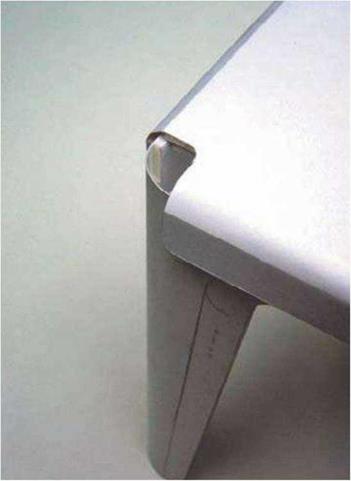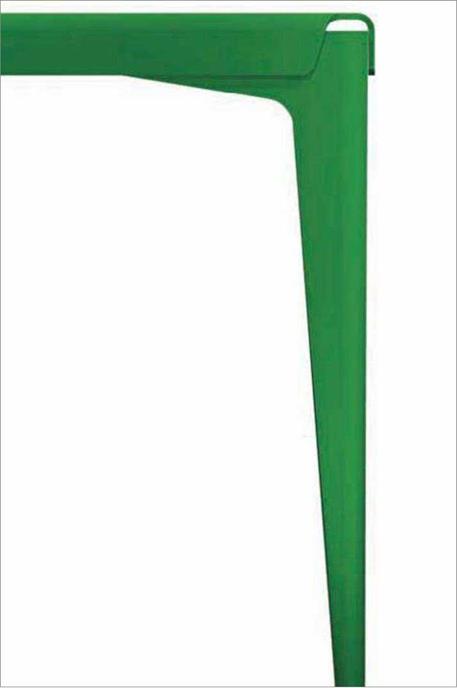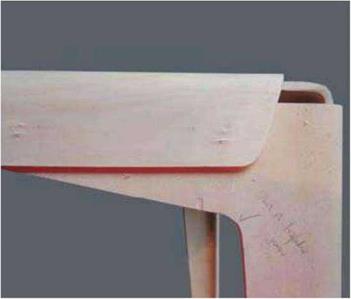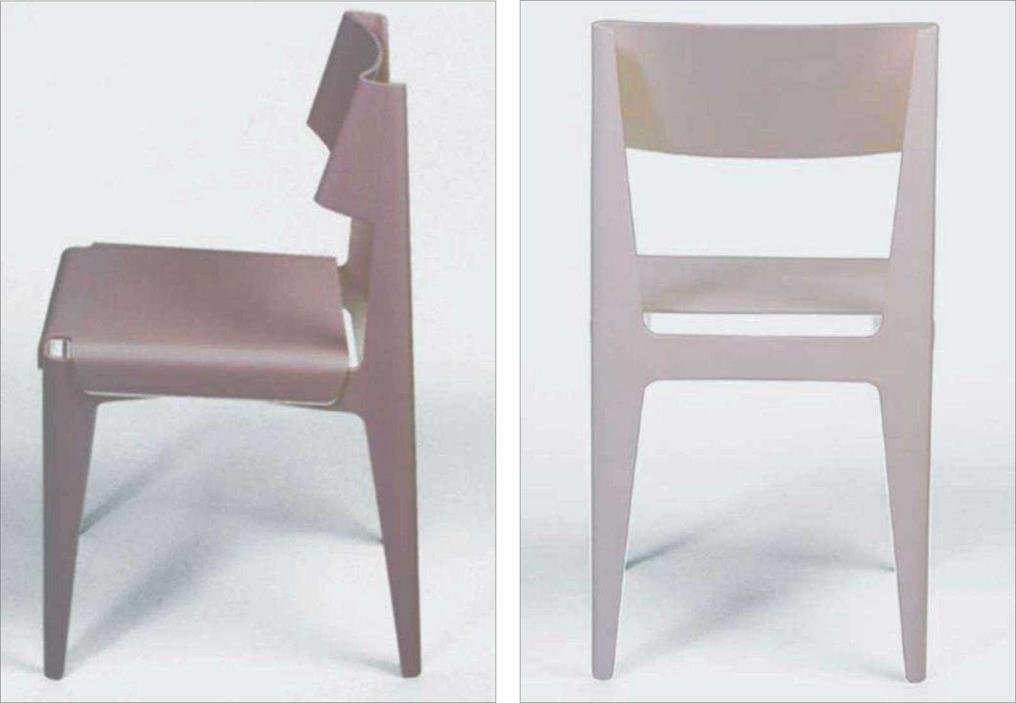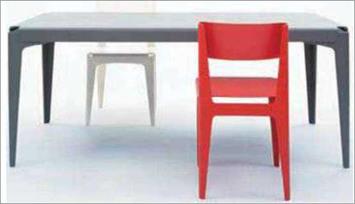
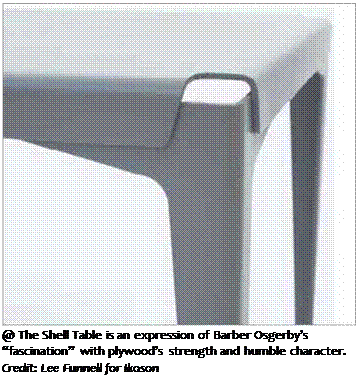 “We love working with plywood,” says Ed Barber, “because it’s somewhere between working with regular wood and with plastic. Like plastic, you can mold plywood into certain shapes, but unlike plastic, it doesn’t deteriorate as it ages. In some cases, it actually looks better as it ages.”
“We love working with plywood,” says Ed Barber, “because it’s somewhere between working with regular wood and with plastic. Like plastic, you can mold plywood into certain shapes, but unlike plastic, it doesn’t deteriorate as it ages. In some cases, it actually looks better as it ages.”
The other idea the designers, Jay Osgerby and Ed Barber, had in mind was to create something as lightweight—both literally and aesthetically—as possible. “We were intrigued with the strength of plywood. Even though it’s thin, when you fold it, it becomes very strong. The Shell Table puts that principle into practice,” Barber continues. “By just folding the top over the leg, you get a very simple line and each component is very strong, but very lightweight.”
The designers’ collaboration with manufacturer Isokon began informally. Because the studio was next to a plywood factory, they often found themselves running into the Isokon folks, who happen to know a lot about making furniture out of plywood. From casual discussions on the nature and possibilities of the raw material, they decided to develop the table together.
“The great thing about plywood,” Barber points out, “is that you can experiment with cardboard beforehand because it performs in a similar way. So there were no hidden surprises.”
Getting the elegant lines and pared down look turned out to be a process of reduction. “We ended up using a thinner plywood than we started with,” Barber says. “We realized that it was unnecessary to have it so thick, so we thinned it down.” They then continued this process of taking away for the remainder of the table parts. “You need enough material to affix the top to the leg so it’s strong,” Barber points out, “but not so much that it detracts from the lightness of the top. We just kept making the leg thinner and thinner until it became unstable, and then we put some back.”
In addition to the gentle curves and airy feel, the Shell Table is marked especially by the unusual openings in the corners. This unique element came about, like so much of the design, by simply letting the material have it’s own way. “When you fold the plywood down,” Barber notes, “you can’t make a neat joint. So we decided to just make a statement out of it, and that became the statement of the table.” Through the tried-and-true process of straightforward trial and error, they came up with a shape for the openings that was “pleasing” according to Barber. “This is quite often the way it happens in design,” he continues. “We knew there’d be a hole, but we didn’t know what shape it would take, and by the time we were done, that was one of the nicest parts of the table.”

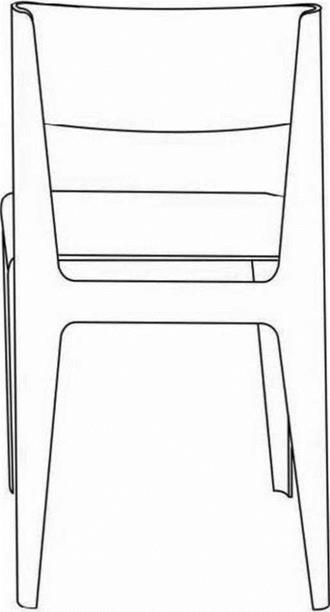
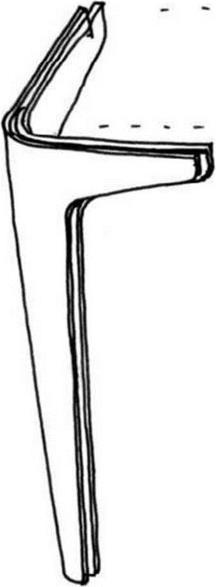
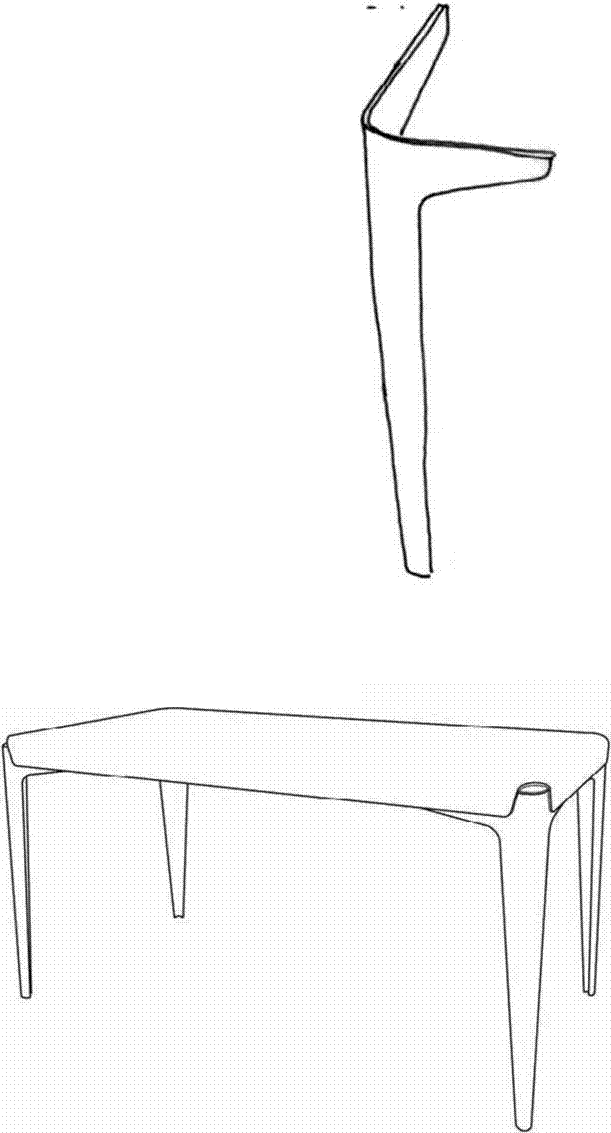
(/) Top left: A preliminary sketch shows one way to connect the top to the leg structure. Ultimately, the designers settled on an option that combined gluing and a mechanical fix that is invisible. Credit: Barber Osgerby
![]() Top right: The leg was designed to use as little material as possible and still offer a stable footprint for the table. Credit: Barber Osgerby
Top right: The leg was designed to use as little material as possible and still offer a stable footprint for the table. Credit: Barber Osgerby
Above : Barber Osgerby uses Vectorworks and Freehand to create computer renderings that are used to present their ideas to the manufacturer. These renderings express the essential elements of the design brief: “to design a table that can be used for both home and work with a minimum number of components, to keep production costs low and assembly easy.”
Credit: Barber Osgerby
However serendipitous the development of the Shell Table seems, it is also a natural extension of the forms that inspire the designers. “What inspires us is not so much a finished product, but details of certain things,” says Barber. “For example, anything that is designed for performance, there’s an honesty about it. We really enjoy looking at boat hulls and plane wings. They are designed solely for function and because of that they look really stunning. If you can borrow these ideas, and put them into furniture, which is of course not essential and not purely about function, you end up with these really elegant forms.” This reference found its expression most clearly in the shape of the table legs. “We could have made the leg straight,” Barber points out, “but then there would have been this unnecessary material. Visually, when you pare the shapes down, you end up with these pleasing, almost aerodynamic forms.”
The designers also made a welcome discovery after the table was made. Because the plywood has a bit of natural flex, the table is self-leveling, even on uneven flooring. When asked if they planned it that way, Barber laughs and acknowledges that it was simplye a “happy coincidence.”
Making the matching chairs was simply a natural extension of the process of making the table. “We just made loads of mock – ups to get the curves and angles just right, to get the comfort,” Barber notes. “It’s really the only way to do it, actually.” Both the table and chairs are made of several parts that are glued and then bolted together. And because Isokon is making them in limited quantities, each piece is hand-finished by a master carpenter. They are available in birch plywood, as well as solid colors. “In theory, you could have it in any color. If someone wanted a zebra pattern,” Barber quips, “we’d say no. But any flat color? We’d make that.”
There’s a pleasing inevitability to the Shell Table and Chairs. Barber points out that this is not an affectation: “Of course, we experimented with cardboard mockups and such. But this was one of the few things we’ve designed where, once the first one was produced, it was like, ‘Okay, that’s that.’. It just had this kind of personality of it’s own. It didn’t need days and days of changing and experimenting. It just felt right.”
|
|
114 DESIGN SECRETS: FURNITURE |
|
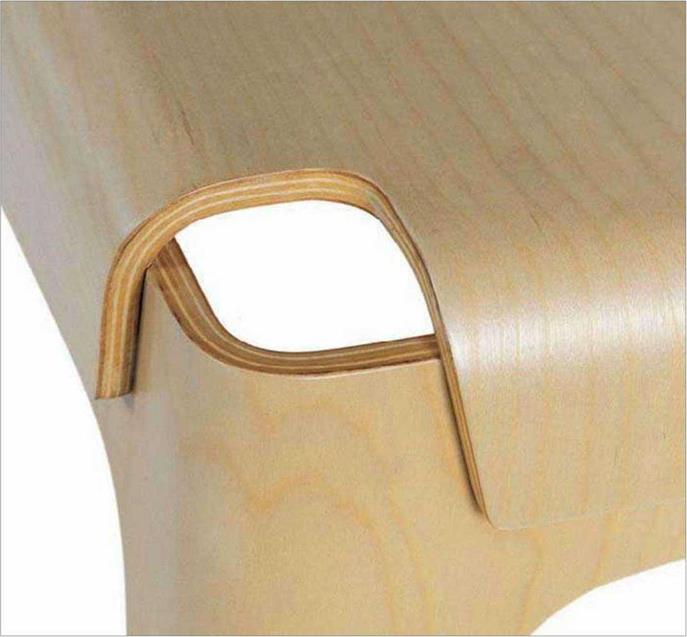
|
|
|
|
 |
|
|
